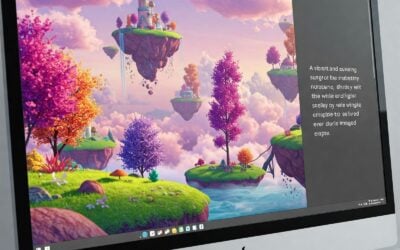Authentic learning is rapidly gaining popularity. It works at every level of education. It connects what students learn in the classroom to real-world problems they will likely face in their future careers. Authentic learning can include activities such as scenarios, hands-on tasks, and debates. The goal of this approach is to increase student engagement. It gives students a concrete connection to their learning. They can see exactly how the information they’ve gained in the classroom applies to their future. When students see how their learning connects to real life, their learning deepens and they are better equipped to apply it in their work.
With the rapid growth of eLearning, the need for authentic learning experiences is more important now than ever. William Horton has written a book to help with just that. He suggests that authentic eLearning experiences include three parts: Absorb, Do, and Connect.
Authentic learning connects to real life. This approach deepens students' learning allowing them to be better equipped to apply it in their work. Share on XAbsorb
Absorb activities require students to do just that: absorb new material. The information is often presented through readings, presentations, or stories. Their goal is to provide students with the information they’ll need to be successful with later parts of the experience. They’re often best suited at the introduction to an experience.
Absorb activities may include:
- a slideshow that includes graphics and narration about a process
- a demonstration of a certain procedure
- an informational podcast
Do
Absorb activities tend to be passive while Do activities get students in action. Do activities ask students to discover, analyze, evaluate, and discuss. They’re the link between the information presented and the knowledge gained. Do activities apply the skills students have acquired. Students can show their learning through real-world tasks. Since that is such a major part of the experience, students should spend at least 50% of their time on the Do activity.
Authentic learning increases student engagement and gives students a concrete connection to their learning. Share on X

Do activities may include:
- a teamwork activity that asks students to create a business plan
- a guided analysis that requires students to evaluate complex data
- a scenario-based activity that provides students with patient symptoms they must then evaluate and diagnose
- a simulation that asks students how they would react in given situations
Makerspaces are great ways to integrate Do activities in a course. Download this eBook to explore how you can integrate makerspaces in your institution’s arts education program.
Connect
Connect activities connect students to something they already know. They provide additional insight for students as to how what they’ve learned can be applied to real life. They show students why the knowledge they gained is valuable. Connect activities tie everything together. They are often short activities that ask students to reflect upon what they’ve just learned. Connect activities work well at the end of an experience. They can also be sprinkled throughout other parts of the experience. They’re quick, and help students see how their learning relates to real life.

Connect activities may include:
- a summary activity that requires students to recap the important aspects of what they’ve just learned
- an evaluation activity that asks students to rate the importance of various methods
- a rhetorical question that leads students to see how the activity connects to the real world
Students learn best when they can see how their learning will benefit them. Authentic learning experiences give students the information they need, provide them with practice opportunities, and show them how these experiences connect to their future careers.
In part two, we’ll look closely at what it takes to develop an authentic learning experience. We’ll give you the tools you need to create an Absorb, Do, and Connect activity that connects to your curriculum.




